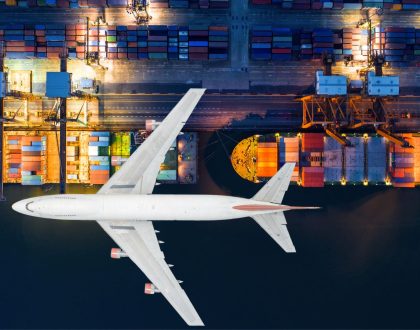Shipping and Logistics: Navigating the Complex World of Global Trade

In today’s interconnected world, the efficient movement of goods across the globe is more critical than ever before. The realm of shipping and logistics is vast and ever-evolving, encompassing a multitude of processes and strategies that play a pivotal role in the success of businesses worldwide. In this comprehensive guide, we will delve into the intricacies of shipping and logistics, exploring the key concepts, challenges, and strategies that define this dynamic industry.

Understanding the Basics
The Foundation of Shipping
At the heart of global trade lies the concept of shipping. This is the process of transporting goods from one location to another, whether it’s across town or across oceans. Shipping can involve various modes of transport, including trucks, ships, airplanes, and trains. The choice of mode depends on factors such as distance, urgency, and the nature of the goods.
Logistics: The Art of Coordination
Logistics, on the other hand, is the meticulous coordination of various activities to ensure the smooth flow of goods from point A to point B. It encompasses everything from inventory management and warehousing to order fulfillment and transportation. Effective logistics can streamline operations, reduce costs, and enhance customer satisfaction.
Navigating the Challenges
Supply Chain Disruptions
The modern supply chain is susceptible to numerous disruptions, from natural disasters to global pandemics. These disruptions can lead to delays, shortages, and increased costs. To mitigate these risks, businesses must adopt agile and resilient supply chain strategies.
Regulatory Compliance
Shipping and logistics are heavily regulated, with each country imposing its own set of rules and requirements. Navigating this regulatory landscape can be a daunting task, requiring expertise in customs, tariffs, and trade agreements.
Sustainability and Environmental Concerns
In an era of increasing environmental awareness, sustainability in shipping and logistics is paramount. Businesses are under pressure to reduce their carbon footprint and embrace eco-friendly practices, such as optimizing transportation routes and adopting green technologies.
Strategies for Success
Embracing Technology
In the digital age, technology is a game-changer in the shipping and logistics industry. From advanced tracking systems and route optimization software to IoT-enabled sensors, technology offers unprecedented visibility and control over the supply chain.
Collaborative Partnerships
Successful shipping and logistics often rely on strong partnerships with carriers, suppliers, and logistics providers. Collaboration fosters efficiency and innovation, enabling businesses to respond effectively to market demands.
Customer-Centric Approach
In an era of e-commerce and rapid deliveries, meeting customer expectations is paramount. A customer-centric approach involves offering flexible delivery options, real-time tracking, and responsive customer service.
Conclusion: Navigating the Seas of Global Trade
In conclusion, shipping and logistics are the lifelines of the global economy. Understanding the nuances of this complex industry is essential for businesses aiming to thrive in today’s competitive landscape. As we navigate the challenges of supply chain disruptions, regulatory compliance, and environmental concerns, we must embrace technology, build collaborative partnerships, and prioritize our customers’ needs. By doing so, we can sail confidently through the ever-changing seas of global trade, ensuring our goods reach their destinations efficiently and responsibly. As you embark on your journey in the world of shipping and logistics, remember that success lies in the details, and the pursuit of excellence is a never-ending voyage.

